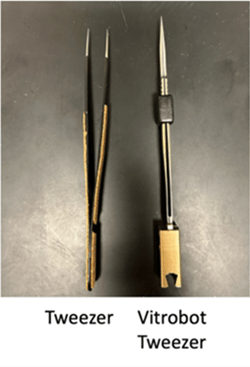The standard procedures and protocols for the IU School of Medicine Center for Electron Microscopy are provided here.
For all specimens brought for immunostaining (non-standard processing), the center does not recommend having any Glutaraldehyde in the fixative. The center recommends 4% Paraformaldehyde in a 0.1M buffer, either phosphate or cacodylate. The specimen should always be submitted in fixative—and not rinsed in a buffer. Paraformaldehyde does not cross link completely and will leach out of the tissue if left in buffer; therefore the tissue becomes unfixed and ruined.
Biohazardous specimens must always be brought in fixative.
For all specimens brought to the Center for Electron Microscopy for standard processing, the center recommends using the fixative provided by the lab. Sample fixation is critical for optimal image quality; therefore, it is recommended that investigators who want to make up their own fixative should clear it with the center first.

